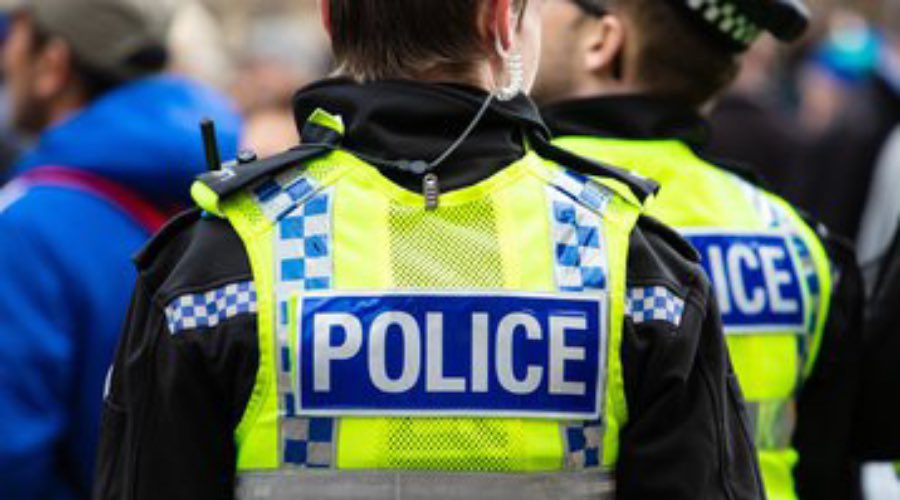
A new user-services vendor to replace Motorola Solutions on the Emergency Services Network (ESN) public-safety broadband initiative could be under contract in August, according to a UK Home Office official who declined to provide a timeline for the broader ESN network, which is supposed to replace the Airwave TETRA system.
Emergency Services Mobile Communications Programme Director John Black made the comments Thursday at the annual British APCO (BAPCO) event. Black shared an encouraging update about the ESN network buildout, which is expected to be largely completed by the end of the year or early in 2025.
Most of 2023 and the first half of this year will be focused on Home Office procurements for ESN, beginning with the user-services portion of the project—known as Lot 2—that had to be bid in the aftermath of Motorola Solutions exiting the ESN. The Home Office decided to simply replace the Lot 2 vendor instead of revamping the entire ESN initiative, “so we could preserve momentum and keep going forward in other areas,” Black said.
Black said he expects the Lot 2 vendor to be selected in the upcoming months and that a contract will be signed in August. However, Black declined to estimate when the ESN would be completed and tested to a point when it can replace the Motorola Solutions-owned Airwave TETRA network that provides mission-critical voice communications to UK public-safety personnel today.
“I’m not going to put a timeline out until we’re really confident of it, and that timeline will depend on the new user-services supplier and the plan they’ve presented—and that they’ve agreed with us,” Black said during his BAPCO speech, a recording of which was supplied to IWCE’s Urgent Communications.
Officially, the target date for ESN completion is at the end of 2026, but multiple UK officials have indicated that the ESN likely will not be ready to replace Airwave as the primary mission-critical communications platform for public safety until the end of the decade.
In addition to overseeing the Lot 2 procurement, the Home Office has been conducting tests of mission-critical (MCX) services to determine how they will perform in a variety of scenarios, from last year’s coronation events to festivals and football matches, according to Black.
“That’s told us a number of things,” he said. “The first thing it’s done is that it’s given us confidence that this solution is going to work, although—in some scenarios with some configurations—we’ve had problems, we know what they are, and we’re able to fix them. So, our confidence in the solution—even when under stress—remains high.
“The second thing it’s done is that it’s already told us about a number of configuration and customization parameters we have to get right for the solution to work.”
These tests have been performed with Motorola Solutions’ Kodiak offering as the LTE push-to-talk (PTT) service—not the platform that will be provided by the new user-services vendor—but the finding from the testing have been very valuable, Black said.
“It is not with the final MCX that we’ll use, but it is with a broadly standards-conforming solution, and it has really allowed us to exercise the network, both in different usage patterns—with high commercial load or not—and also with different underlying technology, with Ericsson, Nokia and Huawei sites in cities and rural locations,” Black said.
“That program will run for a few more months yet, and we’re very comfortable that we’ve been able to cover a lot of the scenarios that we need to cover. That will significantly de-risk the formal testing, when we get back into that with the new app and the new user-services supplier.”
Black shared several key metrics outlining progress on the buildout of the ESN, including an update on the deployment of cell towers—or “masts”—designed to provide the LTE coverage deemed necessary to service public safety’s communications needs.
“We’re pretty close,” Black said. “EE [the BT-owned commercial wireless carrier providing the bulk of the ESN] had a core contract to put in place 675 new masts; 671 are complete and live, and the four left to go should be done in June. Of the 19,500 sites that needed upgrades to be ESN-ready, there are 22 that are not yet complete, largely because of issues that have to do with satellite backhaul and managing that. “That core coverage is pretty much done. We’re in the tail end of that.”
Black also offered encouraging news about the cell sites in rural areas of the UK, which historically has been progressed behind the rest of the ESN infrastructure. These cell sites could be ready during the next year, he said. “The other big area for us is the extended-area-services work, which is a special program of 292 masts that are being built across remote and rural areas that we’re building directly from the Home Office,” Black said. “Of the 292 sites, 250 are now built, and 89 are activated.
“Our target was to complete that by the end of 2024. There is some complexity with a few of the sites, … which means that a few of the sites will slip into 2025. But that job will be done well before we need it.”Black said that 55 teams are working in the early-morning hours every day to deploy gear designed to support ESN coverage in the London Underground and that 48 of the 82 cell sites needed to support broadband air-to-ground communications have been built.
After the Home Office finalizes a deal with the Lot 2 supplier at the end of the summer, the Home Office will launch procurements to select an MCX dispatcher solution and an interworking gateway vendor that will allow Airwave and ESN users to talk to each other during the transition period between the two systems, Black said.